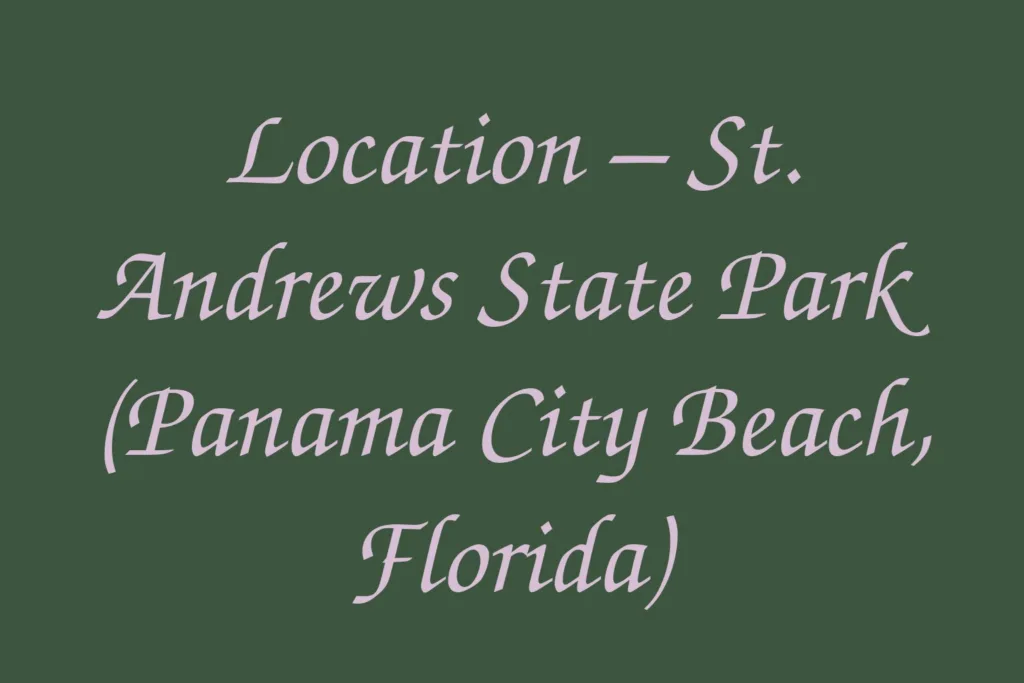St. Andrews State Park Jetty Guide — Florida’s Hidden Coastal Gem
Located on the western edge of St. Andrews State Park in Panama City Beach, Florida, the Jetty is one of the park’s most iconic landmarks. This massive rock formation stretches into the Gulf of Mexico, breaking waves and creating a calm, shallow lagoon perfect for swimming, snorkeling, freediving, and shore fishing. It’s a place where the raw power of the ocean meets tranquil natural beauty.
Geography and Structure
The Jetty is built from huge granite boulders designed to protect the shoreline from strong currents. By dispersing wave energy, it forms a lagoon-like area inside the park with crystal-clear and often warm water. The inner zone has a sandy bottom mixed with crushed shells, while the outer edge transitions into rocky, seaweed-covered surfaces that support a rich variety of marine life.
Why It’s So Popular
- Calm waters: The Jetty acts as a natural barrier, keeping the inner area calm and ideal for swimming.
- Rich marine life: Expect to see reef fish, crabs, and even the occasional stingray or sea turtle.
- All-in-one experience: Swim, snorkel, dive, or fish—all in the same area.
- Unforgettable sunsets: Its west-facing orientation makes it one of the best spots in Panama City Beach for sunset photography.
Activities
Swimming and Snorkeling
The inner side of the Jetty is perfect for families and beginners. The shallow, protected water makes it easy to explore without worry. Bring a mask, snorkel, and short fins. Mornings usually offer the best visibility. Avoid touching rocks or marine creatures to preserve the fragile underwater ecosystem.
Freediving
Depth increases gradually from the shore outward, with rocky crevices and small coral patches. Always dive with a buddy, use a surface float for visibility, and stay clear of boat traffic zones. The Jetty’s structure offers countless hiding places for fish and a colorful underwater landscape to explore.
Shore Fishing
At sunrise, anglers line up along the Jetty, casting for sheepshead, pompano, bluefish, and Spanish mackerel. Metal spoons and live bait work well here. A valid Florida fishing license is required, and local size and catch limits should always be checked before casting.
Best Time to Visit
Spring and fall are ideal for visiting, offering the best balance of water temperature and visibility. Southwesterly winds can create waves on the outer edge, but the inner lagoon remains calm. After storms, visibility may drop temporarily, yet the Jetty quickly returns to its clear, turquoise charm.
Safety and Environmental Etiquette
- Footwear: Wear water shoes to protect your feet from rocks and shells.
- Currents: Avoid the Jetty’s tip during strong tides or breaking waves.
- Wildlife: Don’t feed or touch marine life; leave shells and coral where you find them.
- Leave No Trace: Pack out all trash, and help keep the shoreline pristine.
Access and Amenities
The Jetty is easily accessible from the park entrance by following directional signs. Facilities include restrooms, showers, and shaded picnic tables. Parking is available nearby. During the summer, lifeguards may be on duty depending on crowd levels. Families appreciate the short walking distance and the safe, shallow water for children.
Photography Tips
- Golden hour: Capture the soft light of sunrise or sunset reflecting on the rocks.
- Polarizing filter: Reduce glare and highlight underwater detail.
- Composition: Align the Jetty with the horizon to create a sense of depth and symmetry.
Common Mistakes to Avoid
- Walking barefoot on the Jetty’s rocks—cuts and slips are common.
- Snorkeling too far out without a buoy or partner.
- Touching marine life or removing shells, which can harm the local ecosystem.
The St. Andrews State Park Jetty is more than a scenic rock barrier—it’s a living intersection between land and sea. Its calm, protected waters welcome swimmers and snorkelers, while its rugged edges call to adventurers and photographers. Whether you come to fish, dive, or simply watch the sun melt into the Gulf, the Jetty offers an unforgettable slice of Florida’s wild beauty.


